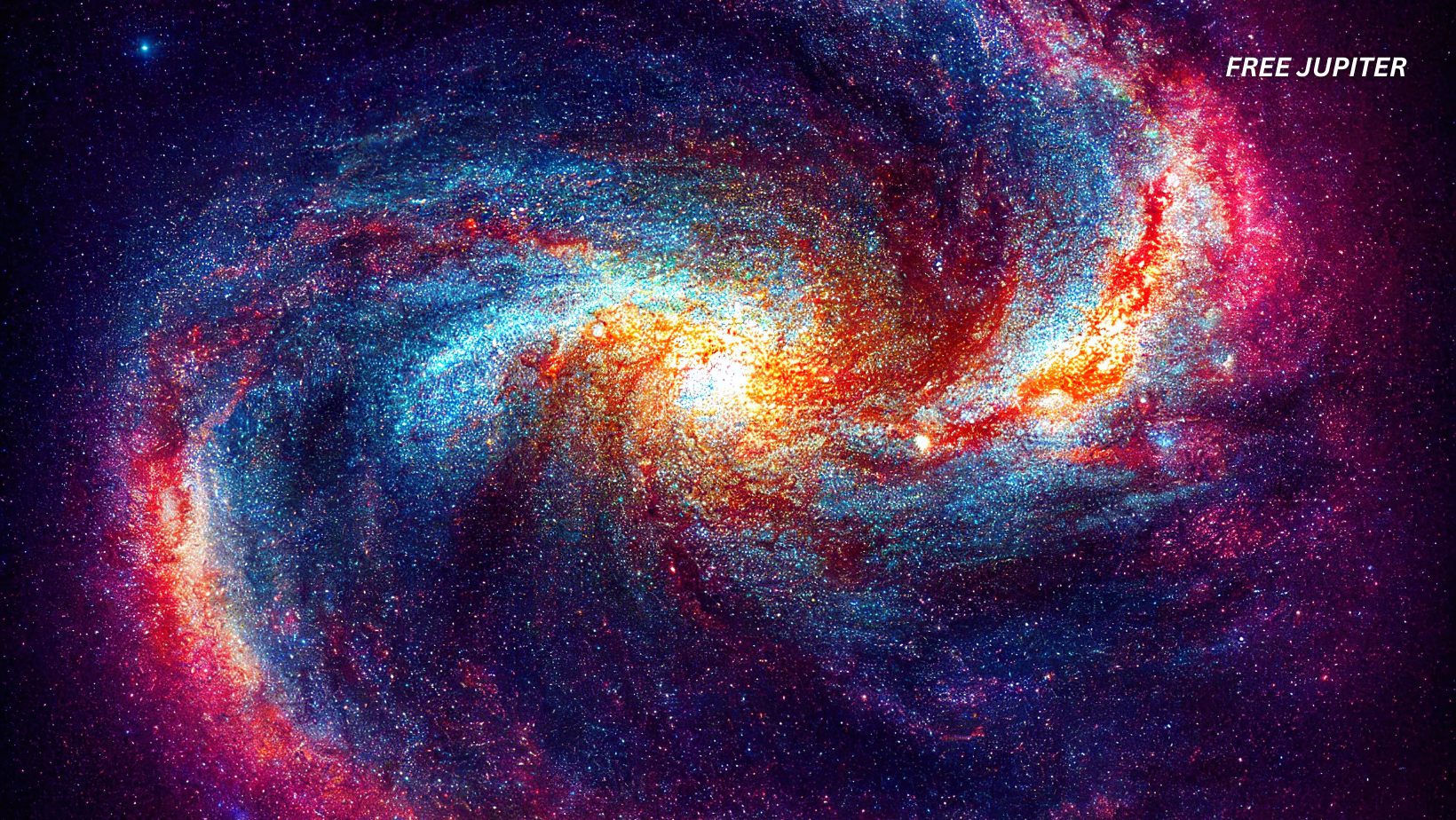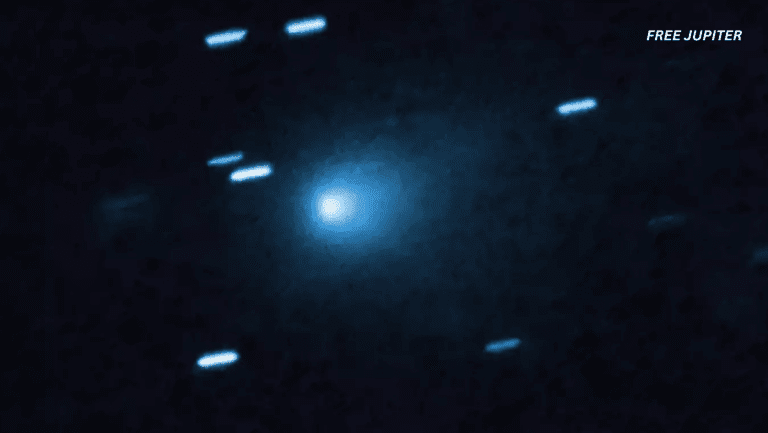For as long as scientists have studied the stars, one grand question has loomed over humanity: How will the universe end?
For many years, the most accepted idea was that the universe would simply keep expanding forever. Galaxies would drift farther apart, stars would die out one by one, and everything would slowly fade into cold, endless darkness — a scenario sometimes called the “Big Freeze.”
But a group of physicists has offered a stunning alternative. What if, instead of drifting off into nothingness, the universe is building up to a final, spectacular collapse — one that mirrors the very explosion that began it all?
Their answer is a possibility known as the “Big Crunch.”
According to new research published in The Journal of Cosmology and Astroparticle Physics, the universe may not expand endlessly after all. Instead, it might someday reach its maximum size, slow down, and then reverse direction, folding in on itself until everything — from the tiniest atoms to the largest galaxies — is crushed together once more.
It’s a mind-bending idea: a cosmic rewind that could bring the universe full circle.
A Universe That Won’t Expand Forever
The study was conducted by physicists Hoang Nhan Luu, Yu-Cheng Qiu, and Henry Tye, who combined recent observations of dark energy with older theoretical physics models to develop a new view of the universe’s fate.
Their model suggests that the universe will continue to expand for billions of years, but not indefinitely. Instead, it will grow to about 1.7 times its current size before reaching a turning point — the moment when expansion gives way to contraction.
After that, the universe would begin collapsing inward, like a rubber band snapping back after being stretched too far. The process would continue until everything — galaxies, stars, planets, and even light — is drawn into a final point of unimaginable density.
This scenario is strikingly similar to the conditions that might have existed before the Big Bang, which scientists believe set our universe in motion about 13.8 billion years ago. The Big Crunch, in essence, would be the Big Bang in reverse.
The Tug-of-War Between Forces
To understand how this could happen, it helps to picture the universe as a vast, invisible tug-of-war between two mighty forces: expansion and gravity.
Expansion is driven by a mysterious substance known as dark energy, which seems to push galaxies apart. Gravity, on the other hand, tries to pull everything together. For most of cosmic history, these forces have been locked in balance — with dark energy slowly taking the lead.
But the strength of dark energy might not be constant. If it weakens over time, gravity could eventually stage a comeback. And if gravity wins, the universe would no longer stretch outward — it would begin to collapse inward.
The key to understanding this balance lies in something known as the cosmological constant, often represented by the Greek letter λ (lambda).
Read more: Earth Receives Final NASA Laser Transmission From 218 Million Miles Away
Einstein’s Cosmic Balancing Act
The cosmological constant was first introduced by Albert Einstein over a century ago as part of his famous theory of general relativity. Einstein initially used it to explain why the universe seemed stable rather than collapsing or expanding.
Later, when astronomer Edwin Hubble discovered that galaxies were moving away from each other — proving that the universe was expanding — Einstein reportedly called his cosmological constant his “biggest blunder.”
Yet the idea resurfaced decades later, when scientists realized that not only is the universe expanding, but the expansion is accelerating. Something unseen, dubbed dark energy, appeared to be pushing galaxies apart faster and faster.
For the last two decades, physicists assumed this constant was positive, which would mean dark energy continues to expand the universe forever. But the new study hints at a startling twist: λ might actually be negative, which would completely change the outcome.
A negative λ would imply that gravity eventually takes the upper hand, overpowering dark energy and pulling the cosmos back together — setting the stage for the Big Crunch.
The Axion Hypothesis
To support their theory, the researchers focused on a mysterious type of particle known as an axion.
Axions are hypothetical particles that have never been directly observed but are widely discussed in modern physics. They are thought to be incredibly light, almost ghost-like, and could make up a large portion of the universe’s invisible dark matter — another great cosmic mystery.
In this model, the physicists propose that a field of axions is currently responsible for accelerating the universe’s expansion. But over time, this field could lose energy, causing dark energy’s “push” to weaken.
When that happens, the expansion of space would gradually slow down. And after billions of years, the universe could reach a tipping point — where it stops expanding altogether. From there, the collapse begins.
The Beginning of the End
According to the team’s calculations, this change might begin roughly 33 billion years from now. That’s when the universe’s accelerating expansion would start to lose momentum.
Once dark energy’s push fades enough, gravity — boosted by the effects of a negative cosmological constant — would begin to dominate.
At first, the collapse might be subtle, almost unnoticeable on a galactic scale. But over time, it would accelerate, much like a ball rolling downhill. Galaxies would start drifting toward each other. Space itself would shrink.
And in the last few billion years, the process would speed up dramatically — turning into a cosmic free fall.
What Makes This Theory Different?
The concept of a Big Crunch has been around for decades, but what makes this new study stand out is how it combines modern data with classical physics in a new way.
Previous models of the universe’s end often depended on fixed values of dark energy or constant rates of expansion. This new model allows for change — suggesting that dark energy’s strength can evolve over time.
It also connects the behavior of dark energy to the physics of axions, offering a more detailed mechanism for how the universe could reverse direction.
If future observations confirm signs of weakening dark energy or support the existence of axions, it could lend credibility to the idea that the universe’s expansion isn’t eternal after all.
Read more: Scientists Say We Could Nuke “City-Killer” Asteroid 2024 YR4 Before It Hits the Moon, If We Act Fast
But How Certain Is This?
As compelling as it sounds, this theory is still highly speculative. The biggest uncertainty lies in dark energy itself — an invisible, mysterious force that makes up about 68% of the universe but remains poorly understood.
We don’t know what dark energy really is, how it behaves, or whether it stays constant or changes over time. Every new discovery about it has the potential to reshape our understanding of the universe.
The idea of a Big Crunch is one possible ending among several. Others include:
- The Big Freeze, where the universe expands forever until stars burn out and everything cools into a lifeless void.
- The Big Rip, where expansion speeds up so much that galaxies, stars, and even atoms are torn apart.
- The Heat Death, a variation of the Big Freeze where the universe reaches maximum entropy and energy is evenly distributed, leaving no room for change.
The Big Crunch offers a more cyclical and poetic vision — one where the universe is not destroyed, but renewed.
Featured image: Freepik.
Friendly Note: FreeJupiter.com shares general information for curious minds. Please fact-check all claims and double-check health info with a qualified professional. 🌱










